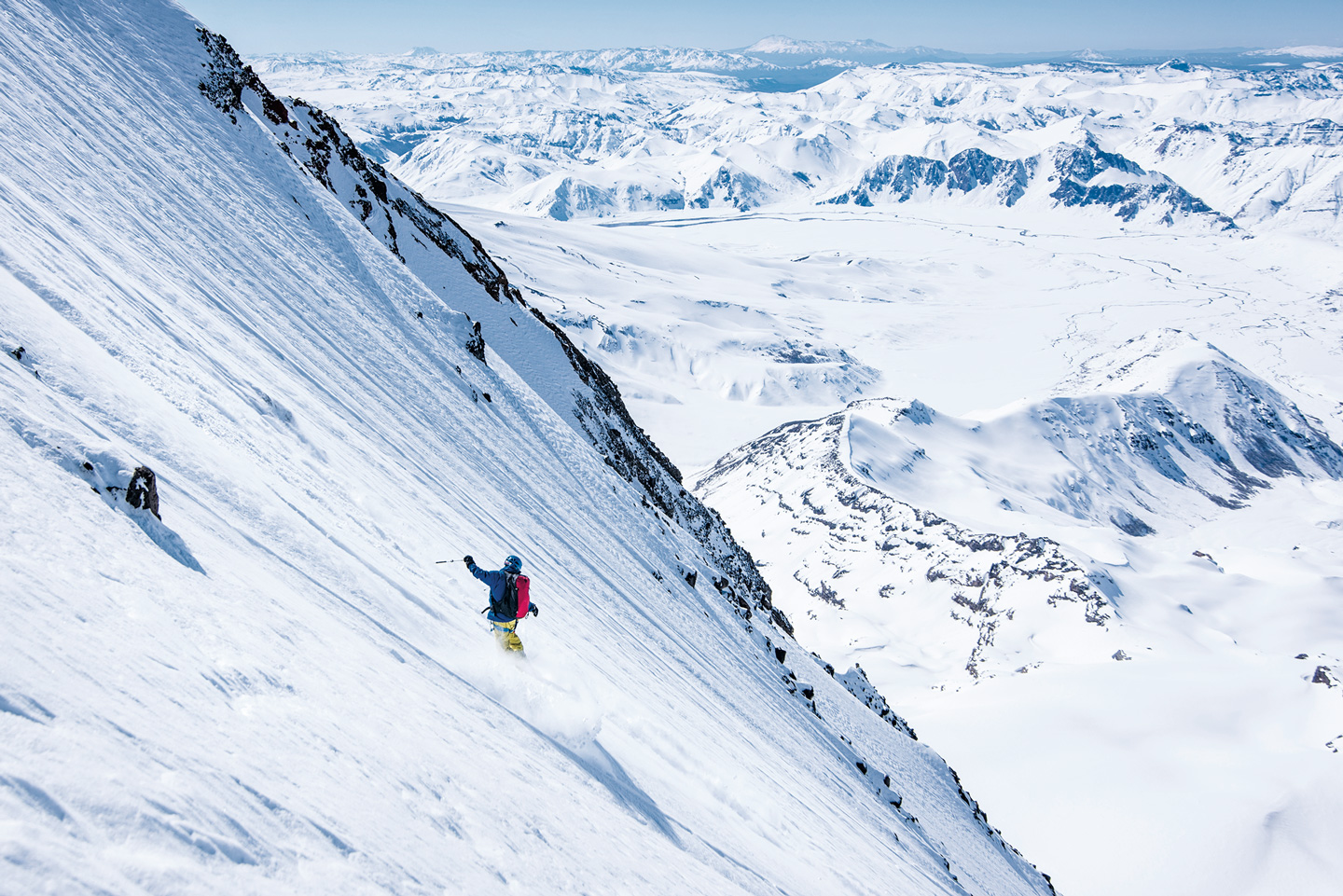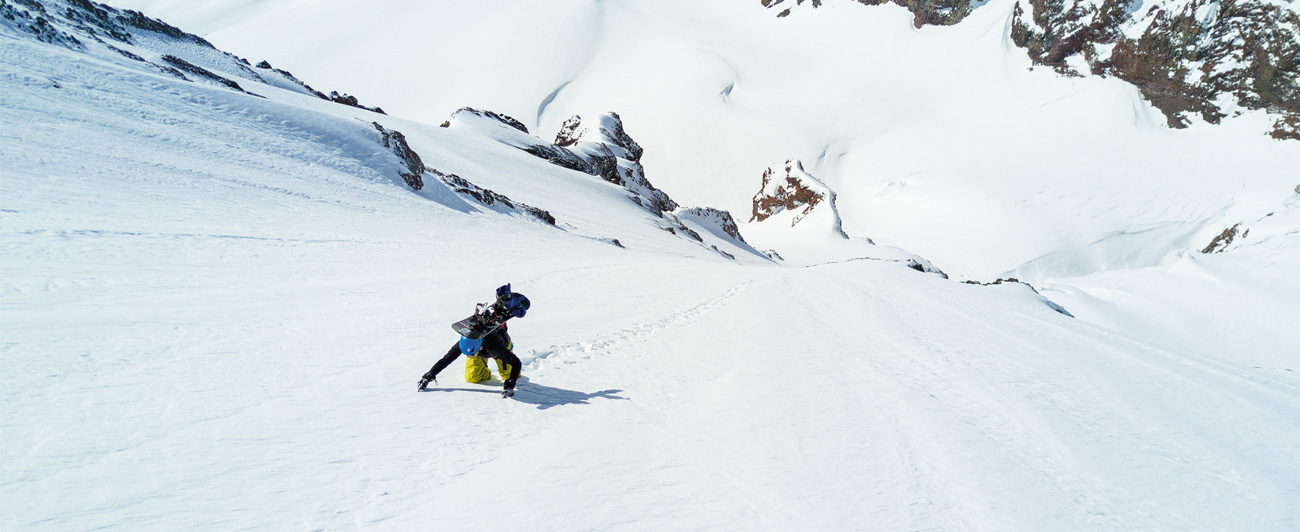Lines
Andean Apex
Sierra Velluda’s Southeast Face
This article first appeared in The Snowboarder’s Journal Issue 15.4.
The alpine of Chilean Patagonia is incredibly vast. To the eye, a singular peak in a sea of mountains may seem close by, but the reality is it may be a day or more away when traveling by foot. Sierra Velluda separates itself from the landscape of south-central Chile due to its shape. It’s not a conical volcano like most of the mountains in the region, but rather a steep and rocky precipice with two distinct summits—an Alaskan-style face in South America.
I’d first discovered Sierra Velluda four years ago in an email from a friend titled “The Peak.” At the time I was traveling in Chile with the Jones Snowboards team. That season our crew had struck gold with a robust hit list of prized lines that grew by the day. That email was stowed away but never forgotten. And last September, I flew south on a moment’s notice to ride Velluda’s southeast face, a complex descent with 6,000 feet of glaciated vertical relief.
Conditions can be fickle in the southern Andes. Storms blow in from the Pacific Ocean with little warning. Weather windows can close at a moment’s notice. With such a short amount of time for prime conditions, myself and local photographer Juan Luis De Heeckeren, who I had met a few years prior, decided to go fast and go light. Immediately after I landed in Santiago, we set off in Juan’s trusty pickup down the Pan-American Highway with Velluda in our sights. In due time, we arrived at the small ski area of Antuco. There, we secured lodging and rested up for a long walk.
From Antuco to Sierra Velluda, the scale of Patagonia takes over. What appears to be a couple of miles can turn into a dozen. We’d hoped to reach the base of the mountain by nightfall. Instead, we set up camp halfway on a ridge with a direct view of the face. Then conditions changed suddenly. Low clouds surrounded our camp—a blanket of white allowing less than five feet of visibility. We enjoyed the silence, hoping the skies would clear for the next day’s approach. The forecast called for an incoming storm in the next 48 hours. This would be our only chance. But we were deep in the mountains and, sometimes, just being there is enough. I set my alarm for 2 a.m. hoping for a 3 a.m. departure.

Before my alarm went off, I arose and poked my head outside. It was a clear, calm, starry, night. I woke Juan for coffee and a light breakfast and we set off. The snow was firm. Before too long, the clouds closed in again. I could barely make out Juan’s headlamp behind me. It was still early, so we continued onward with hopes of getting above the clouds. Then, in an instant, an otherworldly, predawn landscape emerged, space-like and ethereal.
We reached the apron of the southeast face before dawn. There, we collected our alpine gear, harnesses and crampons, and prepared ourselves for the next several hours as alpenglow touched the mountain’s face, highlighting its grand scale. “Is this thing even doable?” I asked.
Prior to our arrival, a fresh avalanche—maybe a couple of days old—had taken out one of the hanging snowfields above the southeast face and left what had been the obvious start of the ascent impassable. I searched for a way around the debris and tried my luck with some mixed climbing techniques. It didn’t work. It wouldn’t go. But moments later, I found a weakness in the wall and safe passage through an intimidating serac field. With two ice axes in hand, I attempted to negotiate the crux, a small ice climb, but the line wasn’t giving herself up easily. We both knew we were going to have to work for it.
We were halfway up the face. The weather was holding, and we’d been traveling for 10 hours now. The climb was a relentless vertical staircase that was turning out to be long and adventurous. At this point, exhaustion hit me hard. Kicking into the snow with each step, my toes and calves shouted that they had had enough.
